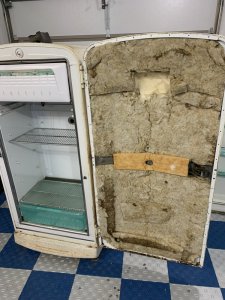- Feb 5, 2019
- 64
- 44
I just started a build with a 1950’s Philco fridge I bought for $30. When I was taking it apart I bent and cracked one of the refrigerant lines and it started hissing out whatever gas was in there. I thought the gas would have leaked out long ago. Is that gas harmful? And how do I go about safely removing the motor and lines?
Question 2 is another that I thought about after I’ve removed all the insulation and breathed in the dust. Could there be asbestos in the insulation? I hope not
Canadagrown
Question 2 is another that I thought about after I’ve removed all the insulation and breathed in the dust. Could there be asbestos in the insulation? I hope not
Canadagrown





